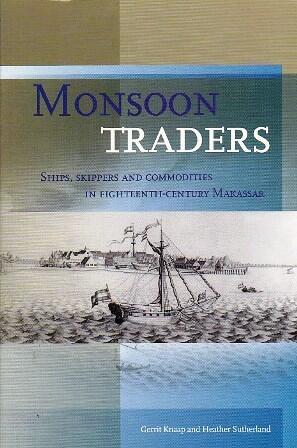
Monsoon Traders: Ships, Skippers And Commodities in Eighteenth-century Makassar
No ratings yet
Format
Paperback
Pages
284
Language
English
Published
Jan 1, 2004
Publisher
Kitlv Press
ISBN-10
906718232X
ISBN-13
9789067182324
Description
In the bustling port of Makassar during the eighteenth century, trade was not just an economic activity; it was a vibrant tapestry woven with the lives of ships, skippers, and commodities. As the authors delve into this fascinating period, they explore the intricacies of maritime commerce that defined the region. The bustling marketplaces, lively interactions among traders, and the strategic significance of Makassar as a hub for various goods underscore its pivotal role in Southeast Asian history.
The narrative paints a vivid picture of the diverse array of commodities that flowed through Makassar, highlighting how these goods influenced local economies and cultures. From spices to textiles, each item tells a story of global connections, local adaptations, and the complex dynamics of trade networks. The skippers, often the unsung heroes of this era, are brought to life through their voyages across treacherous waters, illustrating the risks and rewards inherent in their trade routes.
Ultimately, this exploration reveals not only the importance of Makassar as a trading center but also its broader implications for understanding the interconnectedness of early-modern Southeast Asia. Through meticulous research and engaging storytelling, the authors shed light on a captivating chapter of history that continues to resonate today.
The narrative paints a vivid picture of the diverse array of commodities that flowed through Makassar, highlighting how these goods influenced local economies and cultures. From spices to textiles, each item tells a story of global connections, local adaptations, and the complex dynamics of trade networks. The skippers, often the unsung heroes of this era, are brought to life through their voyages across treacherous waters, illustrating the risks and rewards inherent in their trade routes.
Ultimately, this exploration reveals not only the importance of Makassar as a trading center but also its broader implications for understanding the interconnectedness of early-modern Southeast Asia. Through meticulous research and engaging storytelling, the authors shed light on a captivating chapter of history that continues to resonate today.
Reviews
Reading Log
No reading logs found
Start tracking your reading progress to see logs here
Add Your First Reading LogNotes
Transaction Log
No transaction logs found
Start tracking your book transactions to see logs here
Add Your First Transaction Log